This
Happy
Place
In tiny Lipscomb,
pop. 44, the locals treasure
their rugged Panhandle Camelot
By George Getschow
Photographs by Kenny Braun
Ben Bussard on the High Plains of Lipscomb County.
Ben Bussard is a happy kid.
Age 11, he bursts out the door, BB gun in tow, and scrambles down the hill to Wolf Creek below the family’s log cabin. He and his best buddies will spend all day swimming, fishing, and floating down the current on their log raft. At night, instead of heading home, they will camp out next to a fire, swapping stories about their wild adventures.
In tiny Lipscomb, a flyspeck village cradling a verdant creek valley in the far northeast corner of the Panhandle, “I can go anywhere I want for miles and miles and miles,” beams the boy, who sports dusty blue jeans and a wide-brimmed Stetson over cropped blond hair. Ben’s been to Dallas and a few other big Texas cities, but he doesn’t care for them one bit. “There’s not much to do there,” he says glumly. “You can’t just go outside for a walk or go exploring by yourself. An adult has to be with you.”
Ben’s parents smile as they listen to their young buckaroo describe his escapades along Wolf Creek and beyond. “We’re glad Ben can grow up here,” says his mother, Tanja Bussard, speaking of a town that at first glance looks like an abandoned frontier outpost on the edge of civilization.
Lipscomb, pop. 44, is the county seat of one of the most sparsely settled regions of Texas. It lacks everything urbanites would consider essential: reliable cell phone service and electricity, gas stations, grocery stores, movie theaters, and sit-down restaurants. The closest Walmart is 75 miles away. A carryout restaurant operates only for a few hours a day, and the Bussards open their private Alamo Saloon to serve buffalo chili and brisket to neighboring ranchers who help them during spring roundups.
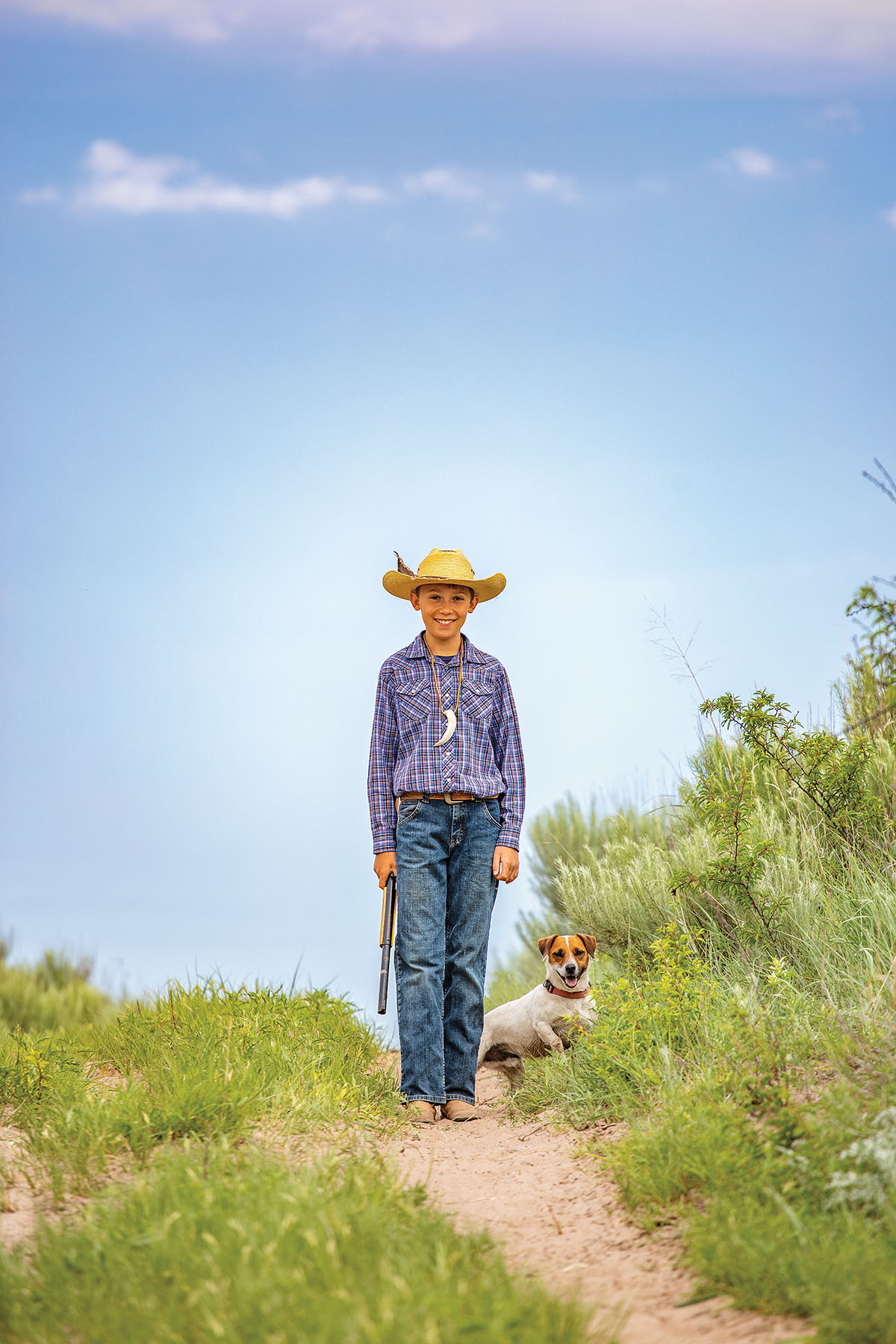
“There isn’t much left here in town,” says Tanja, originally from Germany, who stumbled into Lipscomb 18 years ago while photographing Western cowboys and ranchers for her university dissertation. She met Lance Bussard, a third-
generation cowman, hunter, and trapper, at his saloon, jawing about his exploits on the High Plains of the Panhandle. She was so smitten she decided to stay. They tied the knot inside the Alamo Saloon.
“You get here and you think you’re at the end of the world,” Tanja says. “But you’re actually at the beginning.”
Tanja’s riddle rattled around in my head for days as I wandered the dusty streets of Lipscomb trying to figure out what she meant. A friend first told me about this isolated village more than a year ago when I was lining up a camping trip to Palo Duro Canyon. She described it as a quiet place. Intrigued, I decided to route my trip through Lipscomb and discovered it was, indeed, eerily quiet. But it also was noticeably different than other small Texas towns—still primitive, unpretentious, and devoid of the ubiquitous trappings of modern society. Over the coming months, Lipscomb would turn my expectations upside down.
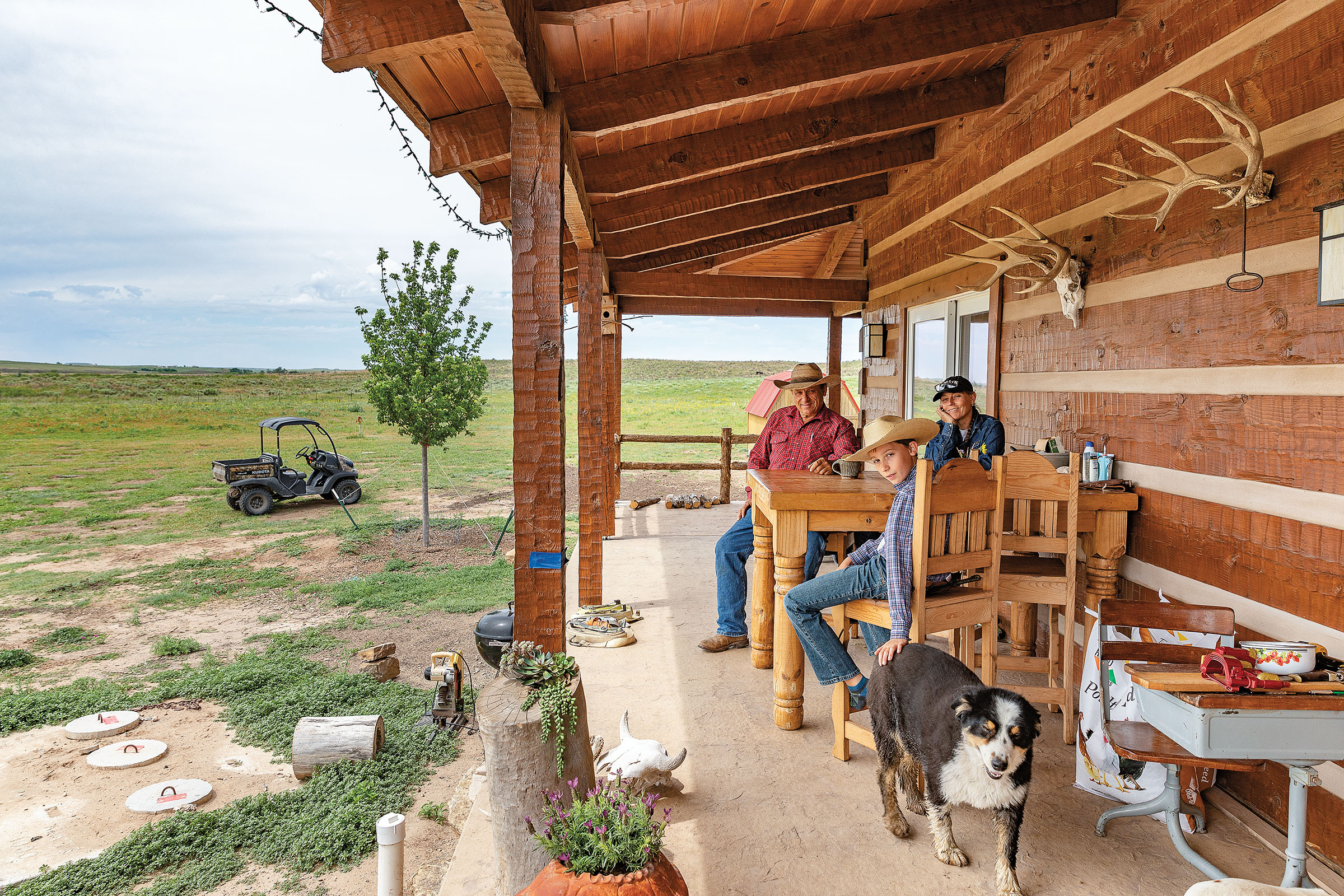
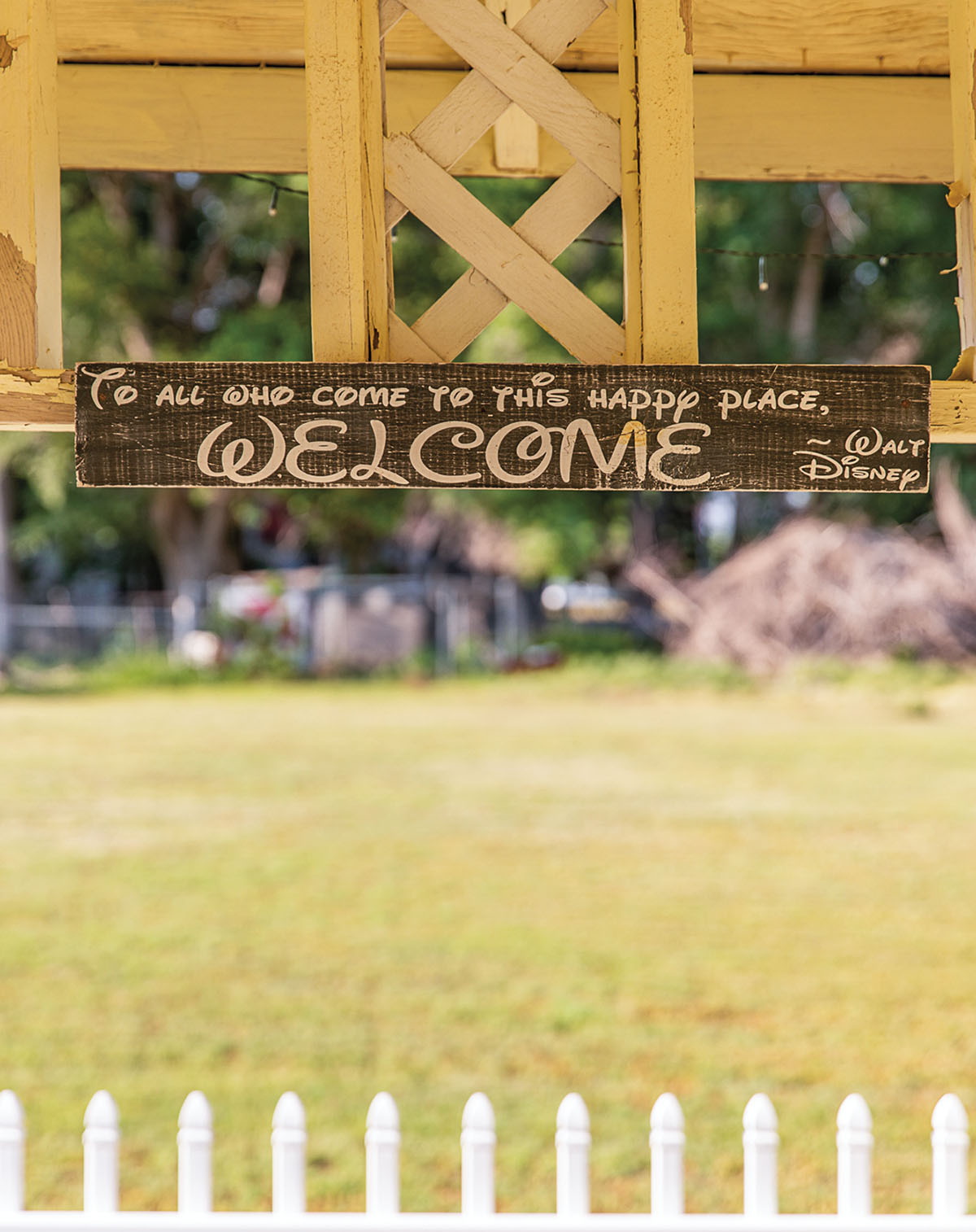
On one corner of Lipscomb’s
town square stands the once-famous summer outdoor platform where fiddlers and dancers from around the state whirled before the owners grew too old and tired to keep it up. Now only squirrels and chipmunks sashay around the structure. On another corner of the square sits the hunched, sagging Six Shooter Draw. Once a local hotspot, it’s now a storage barn. Next door squats J.W. Beeson’s time-scarred saddle shop. Locals say the shop is seldom open these days.
On the other side of the square, across from the courthouse, a weathered wood board proclaims “Lipscomb Town Square.” Instead of the customary cannon or statue of a local hero, the square is adorned with a rusted jalopy, a herd of metal horses, plastic geese and baby dolls, a birdbath, and a gazebo. Inside the gazebo I was surprised to encounter a gracious greeting scrawled across a handmade sign: “To All Who Come To This Happy Place, Welcome.”
This Happy Place? I scratched my head. Are Lipscombites cuckoo? All around me is desolation and ruin. For heaven’s sake, how could anyone be happy in a place like this?
Suddenly, I’m interrupted from my musings by a rafter of well over 100 turkeys strutting across the square, heading toward the home of one of the villagers, who at this moment is wearing pajamas and a long wool sweater. She holds a bucket of cracked corn in her hand, tenderly cooing to the turkeys in her own gobbledygook. The woman, Virginia Scott, performs a happy dance with the turkeys as they peck at the corn. “Good morning, my darlings,” she warbles.
Virginia’s display makes me wonder: Is there more to “This Happy Place” than a few decrepit buildings, a deserted town square, and a well-treated flock of wild turkeys?
At first, the people of Lipscomb treated me like one of the odious porcupines they shoo back to the surrounding prairie. Soon after I arrived, word went out there was a writer from Dallas poking around, asking strange questions about how they could be so happy living in such a desolate place. Many stonewalled me. A knock on a door was met with silence. Calls weren’t returned. Then, one sizzling summer afternoon, Kellie Kjos, the owner of Kellie’s Grill, let me into her kitchen. I thought I had finally prevailed.
“If I offered you a million dollars, would you move to Dallas, Houston, or any other big city?”
“No amount of money would get me out of Lipscomb,” she replies.
I was flummoxed. Later, I had a chance to grill Kellie’s husband, Bernie Kjos, while taking orders at the restaurant. After 15 minutes of interrogation, he swiveled on his chair and faced me. “Man, you just don’t get it, do you?” he says. “But you never will because you’re not from here.”
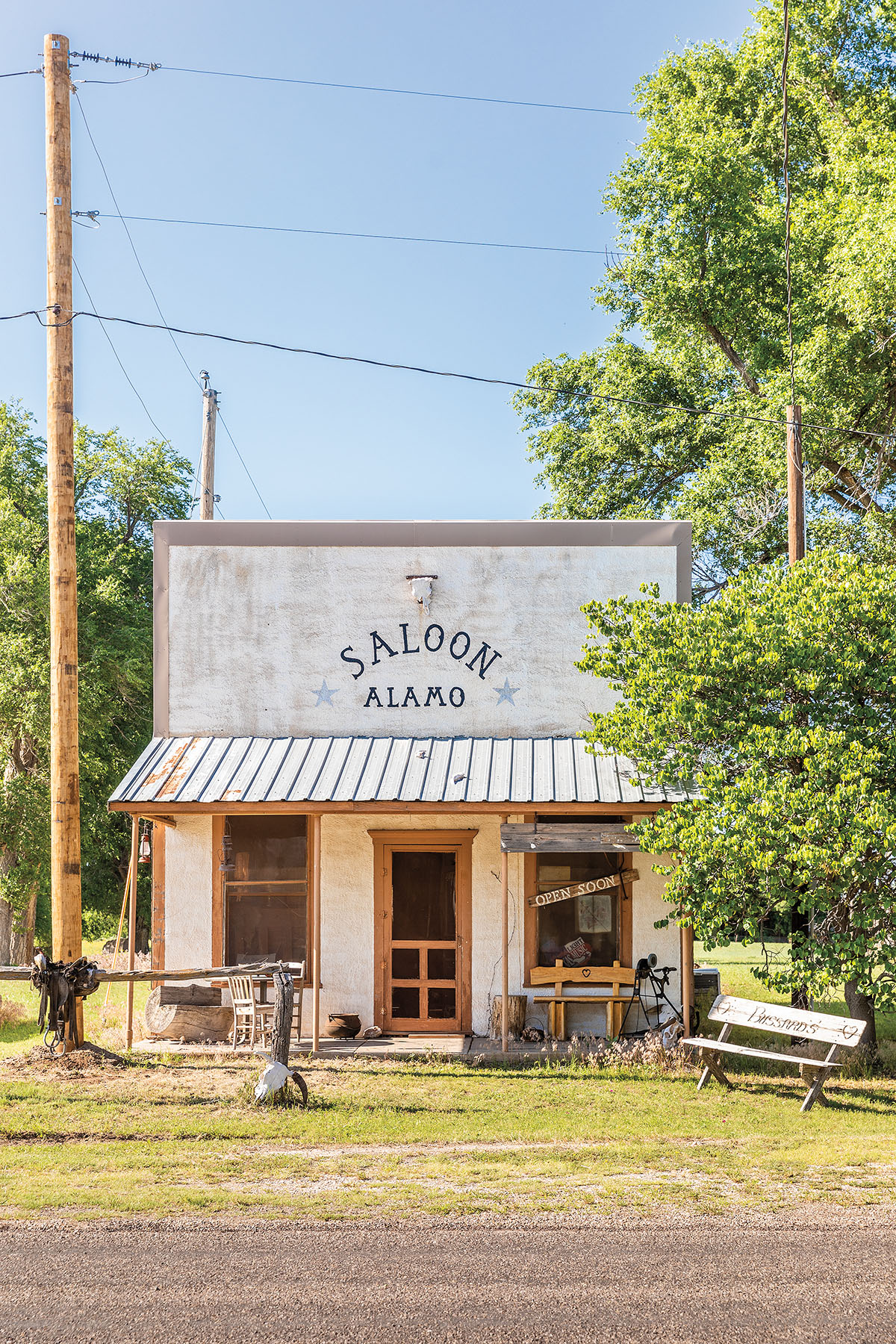
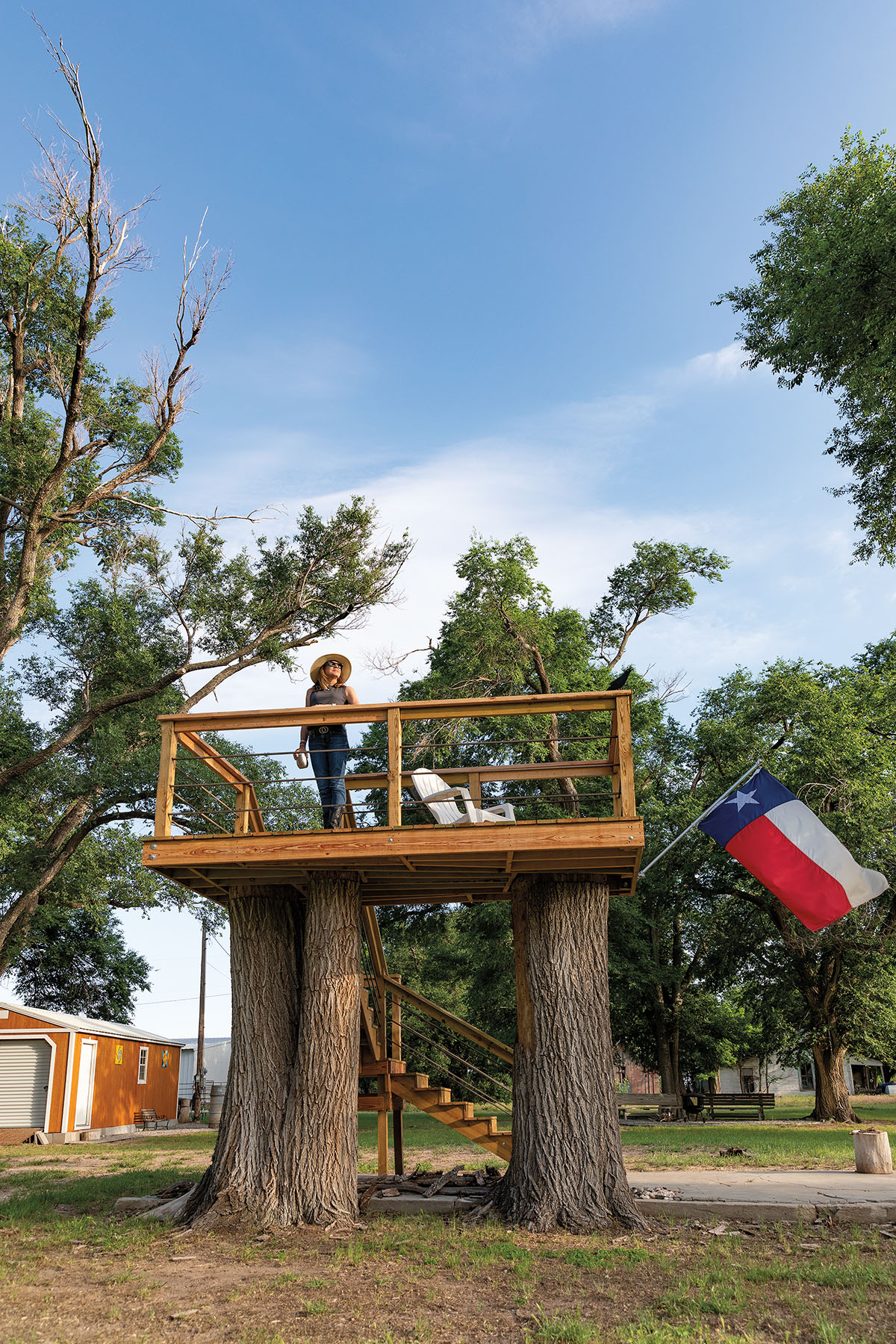
Over the next year
I returned in the spring, summer, fall, and winter in search of the secret to Lipscomb’s happiness. Once the villagers realized I wasn’t going away, they revealed what they say outsiders don’t see: a Camelot, unconstrained by the norms and expectations of modern-day society. Instead, the villagers govern themselves. There’s no mayor. No city council. No chamber of commerce. No Rotary Club. Locals are free from all the ordinances, housing codes, regulations, and restrictions imposed on city dwellers. With so much latitude, the people of Lipscomb feel uninhibited about displaying their quirky tastes and fanciful creations on any street corner.
Virginia is free to plant a flock of giant, wooden replicas of “her” wild turkeys on her front lawn or keep a bunch of goats in a pen next to her backyard. Another resident, Gay Cunningham, is free to construct a stargazing platform to fulfill her fascination with finding unknown celestial spheres. Pam Haines, regarded as the town’s poet laureate, is free to prance around town atop her Arabian gelding and keep a metal bear sculpture in her yard. The villagers delight in identifying homes not by their addresses, but by their radiant colors and peculiar characteristics. There’s The Blue House, The Pink House, The Yellow House, The Cactus House, The Square House, and the once stately Pigeon House, now occupied by pigeons.
Unlike residents in some small towns, Lipscombites don’t worry about the latest amenities they don’t have. Instead, they rely on a barter economy in which, for example, one resident without a working water well mows his neighbor’s lawn in exchange for water from his neighbor’s hose. The same lawn mower builds wheelchair ramps, mends fences, and installs electrical outlets for other neighbors in exchange for garden vegetables, snickerdoodles, and bierocks—a German hamburger and cabbage roll that’s a village favorite.
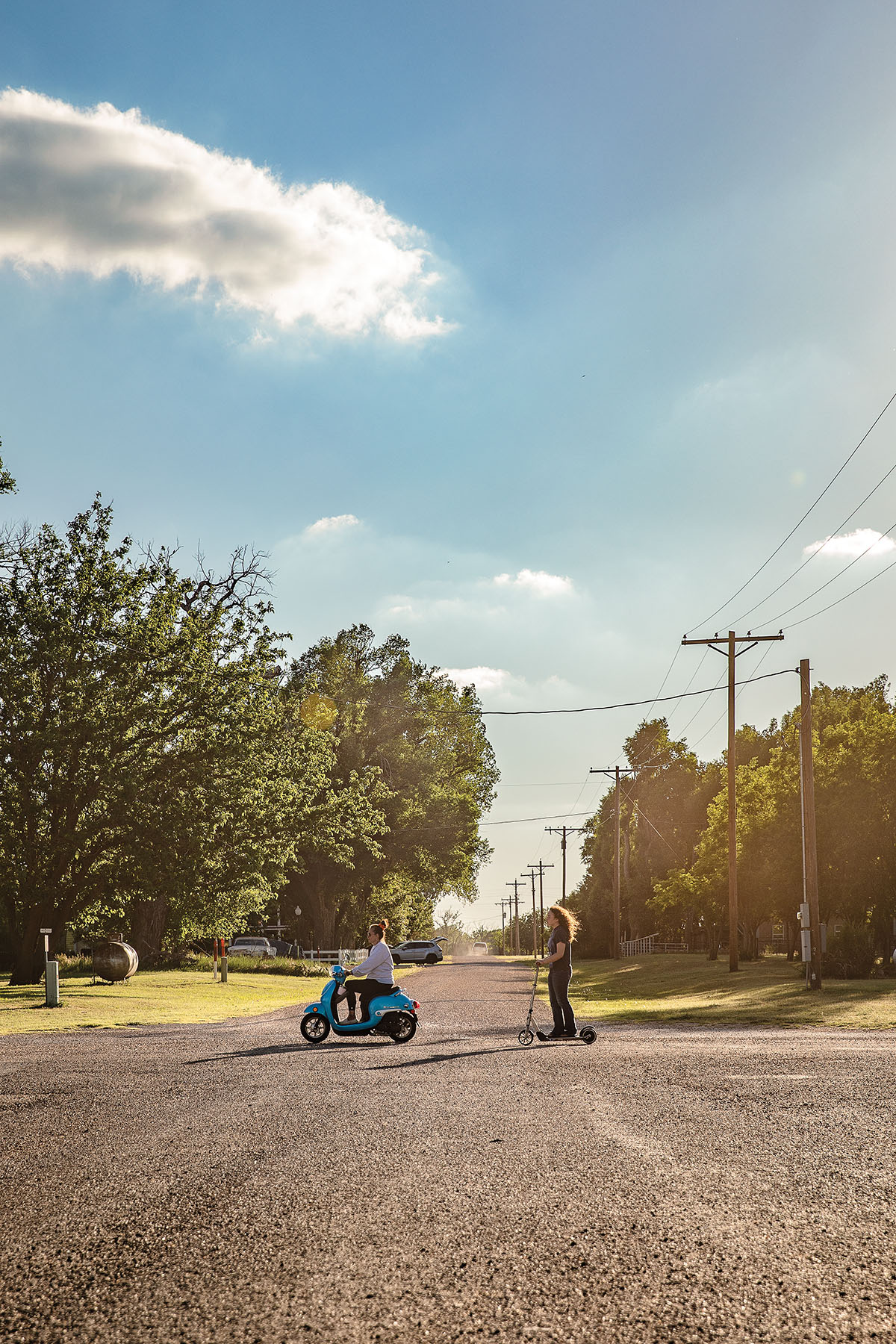
Residents cruising Lipscomb’s quiet streets
Lipscombites also rely on the natural resources all around them. Lance Bussard, for example, ranches cattle on an expanse of rich prairieland spread across Wolf Creek valley. His daughter, Cheri Bussard Huntress, harvests bushels of wild plums across the valley to produce jelly for sale at farmers markets and on Facebook. And she sells the pelts of coyotes, bobcats, and other varmints she’s trapped.
Stopping at the side of a dusty backroad to set a coyote trap, Cheri says she worked for a bank in Wellington for about six months but couldn’t cope with the office lifestyle. Today, she revels in her workspace of the untamed prairie. “I feel free,” she says, just like others in town who live off the land by planting huge vegetable gardens; raising hens for eggs, bees for honey, goats for cheese; and other homespun enterprises.
“It’s easy to live more freely here because we don’t have to bend to what other people do,” explains Jan Luna, who along with her partner, Debby Opdyke, has renovated many ramshackle buildings in town for a pittance of what it would cost in a big city. If she were renovating a historic hotel in Dallas, Jan says, she would be expected to turn it into a showplace for well-to-do travelers. But in Lipscomb, tourists are about as welcome as turkey hunters.
“We don’t exactly cater to tourists around here,” Jan says, explaining that many villagers fear outsiders might turn Lipscomb into a bustling tourist trap. “Occasionally, we have people drive in, look around, and say, ‘You know, with a little development, this place could really be something,’ Jan says. “And I tell them, ‘It already is something. You just can’t see it.’”
This explains why, after spending the last three years restoring a dilapidated, one-story hotel across from the courthouse, Jan isn’t planning to open it to tourists. She’s made sure of that by not posting a sign identifying The Old Hotel. She plans to rent it exclusively for local family reunions, and to deer hunters she or other locals know.
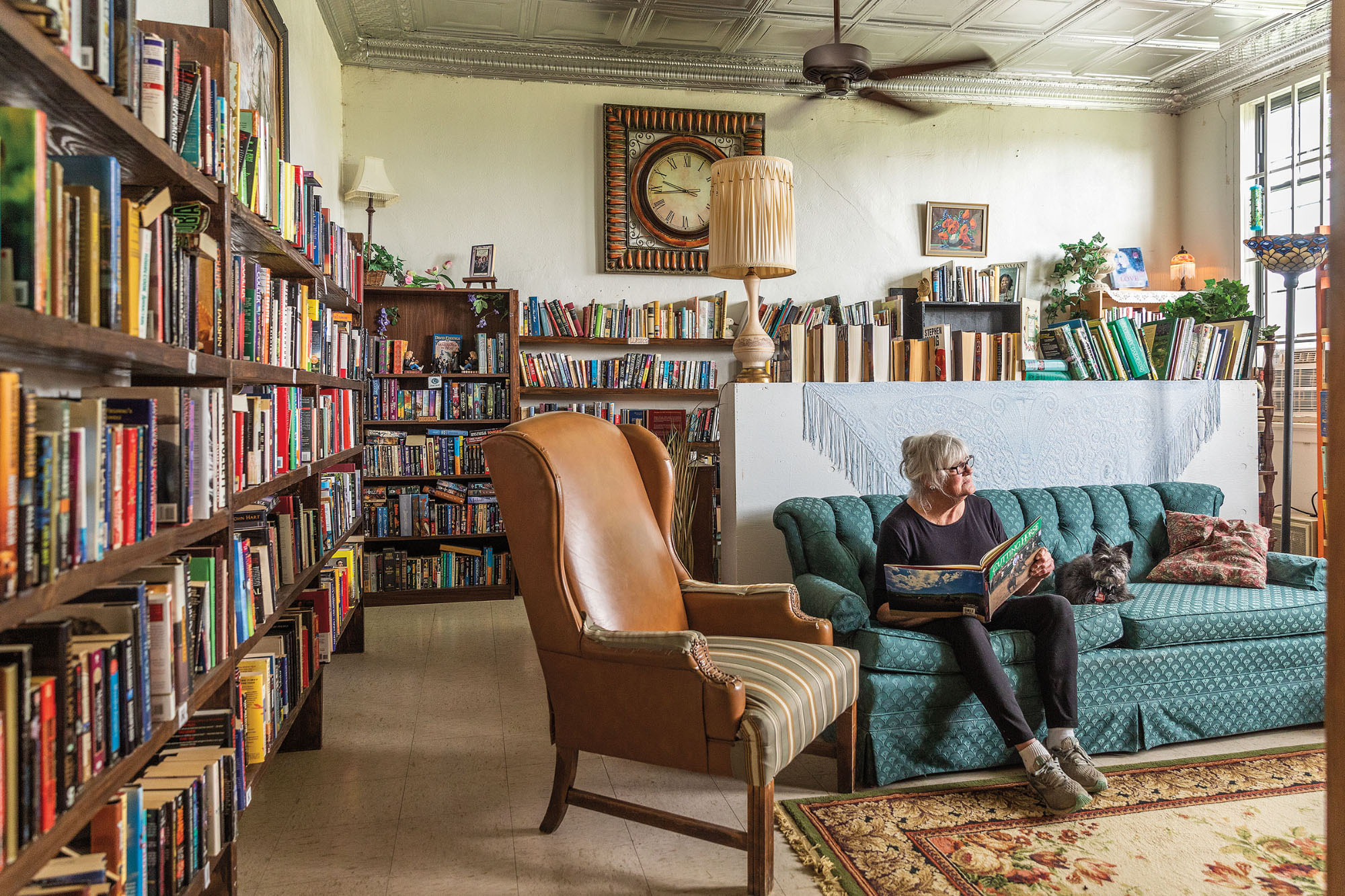
As always, Pam Haines
is burning the midnight oil, penning endless odes to her idyllic town and her “dearest” villagers. In one poem, which she shares with me in hopes I will “get” what makes Lipscomb, Lipscomb, she writes:
For Lipscomb is a place of dreams,
Not unlike Camelot, it seems—
A place that shelters from the din
And nurtures those who live within
When she isn’t crafting poems, Pam’s dreaming up new projects to make the village “pretty,” as she puts it. In recent years, Pam turned an empty room in Lipscomb’s former schoolhouse into a public library. She also transformed rooms inside Lipscomb’s old country church into a dreamscape, where baby monkeys, elephants, owls, and cherubs hover over an antique crib. Both are popular with the community. Pam’s dreamscape extends to a whimsical children’s classroom lacking one thing she and the other villagers wish Lipscomb had more of—actual children. The dozen children in town attend school 30 miles away in Canadian.
Pam made sure to place a dragonfly pillow inside the classroom. “A dragonfly is a symbol of transformation, growth, and protection,” she says.
Before the first European settlers arrived, the Comanche, Kiowa, Cheyenne, and Arapaho tribes thought of Wolf Creek valley as their utopia, too. Bison, antelope, deer, and turkey provided ample food, shelter, and clothing. But in tribal culture, the dragonfly was an important spirit animal—protecting people from all dangers, including the violent windstorms that frequently sweep across the Southern Plains. They painted the powerful dragonfly on their tepees and scalp shirts, and even made them into brass hairpieces.
Even so, the Southern Plains Indians were quickly subdued by the overwhelming firepower of the U.S. Army and the decimation of the bison by American hunters. In recent years, some Lipscomb residents have uncovered relics—arrowheads, spears, shell casings, brass bells—along Wolf Creek from the so-called Red River War of 1874-75. A collection of Lance Bussard’s Native American relics are on display at Lipscomb’s Wolf Creek Heritage Museum.
Another resident, Stephen Thorne, made the remarkable discovery of a brass dragonfly figure. He found the relic, its dark patina tarnished by age and dirt, a few years ago while metal detecting a few hundred yards north of the courthouse. “I was awestruck,” he says, realizing the object he was holding in his hand may have been an all-powerful totem to the Native American who made it, and who could have died in battle clutching it in his hand.
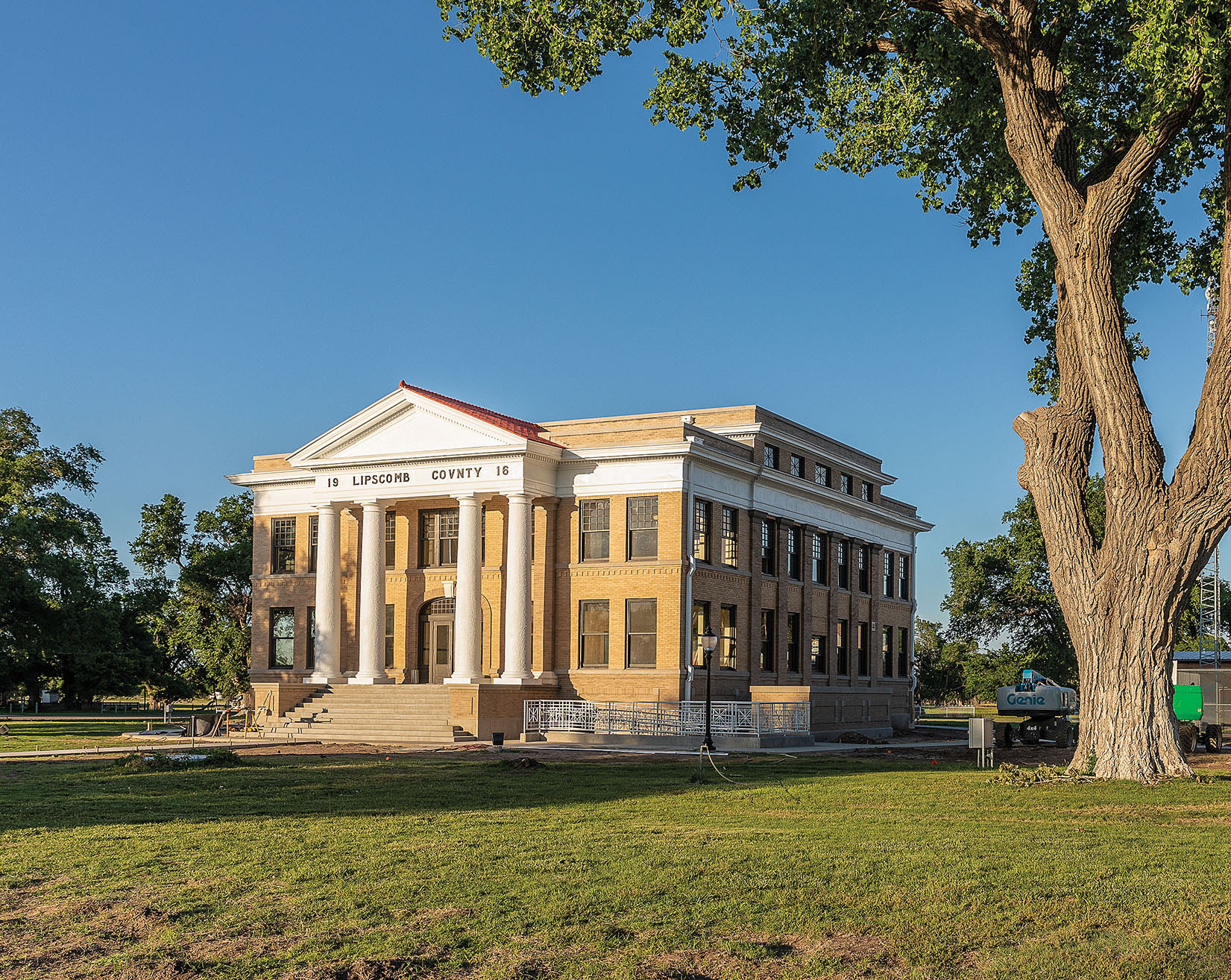
Exploring the northeast corner of the Texas Panhandle
In 1887, little Lipscomb and equally tiny Higgins were locked in a tug of war over the proposed route of the Panhandle and Santa Fe Railroad. Higgins won the railroad, but Lipscomb got the county seat. Today, Higgins’ railroad is abandoned, and the commerce that once brought prosperity to Lipscomb is gone. But for travelers searching for hidden treasures, Lipscomb County is a gold mine. Here are some worthy destinations to explore:
The 1916 Lipscomb County Courthouse, a fine example of the Classical Revival style, attracts a steady stream of architecture buffs. The Texas Historical Commission plans to complete a restoration of the building this September. co.lipscomb.tx.us
The Wolf Creek Heritage Museum in Lipscomb preserves local history and displays the work of local artists. wolfcreekheritagemuseum.org
Darrouzett, 17 miles north of Lipscomb, hosts Main Street Christmas on the first Saturday of December. The event features parades, animated light shows, ornament-making, and savory local cuisine. facebook.com/DZTTX
Booker Grocery Cafe & Catering in Booker, a 30-mile drive northwest of Lipscomb, serves local meat on par with big-city steakhouses. The store also ships steaks. facebook.com/bookergrocerycafe
Follett, a 22-mile drive northeast of Lipscomb, is known as the “Gateway to the Golden Spread” for its role in the heyday of Southern Plains wheat farming. Visit Nana’s Cafe for mouthwatering cheeseburgers. nanascafetx.com
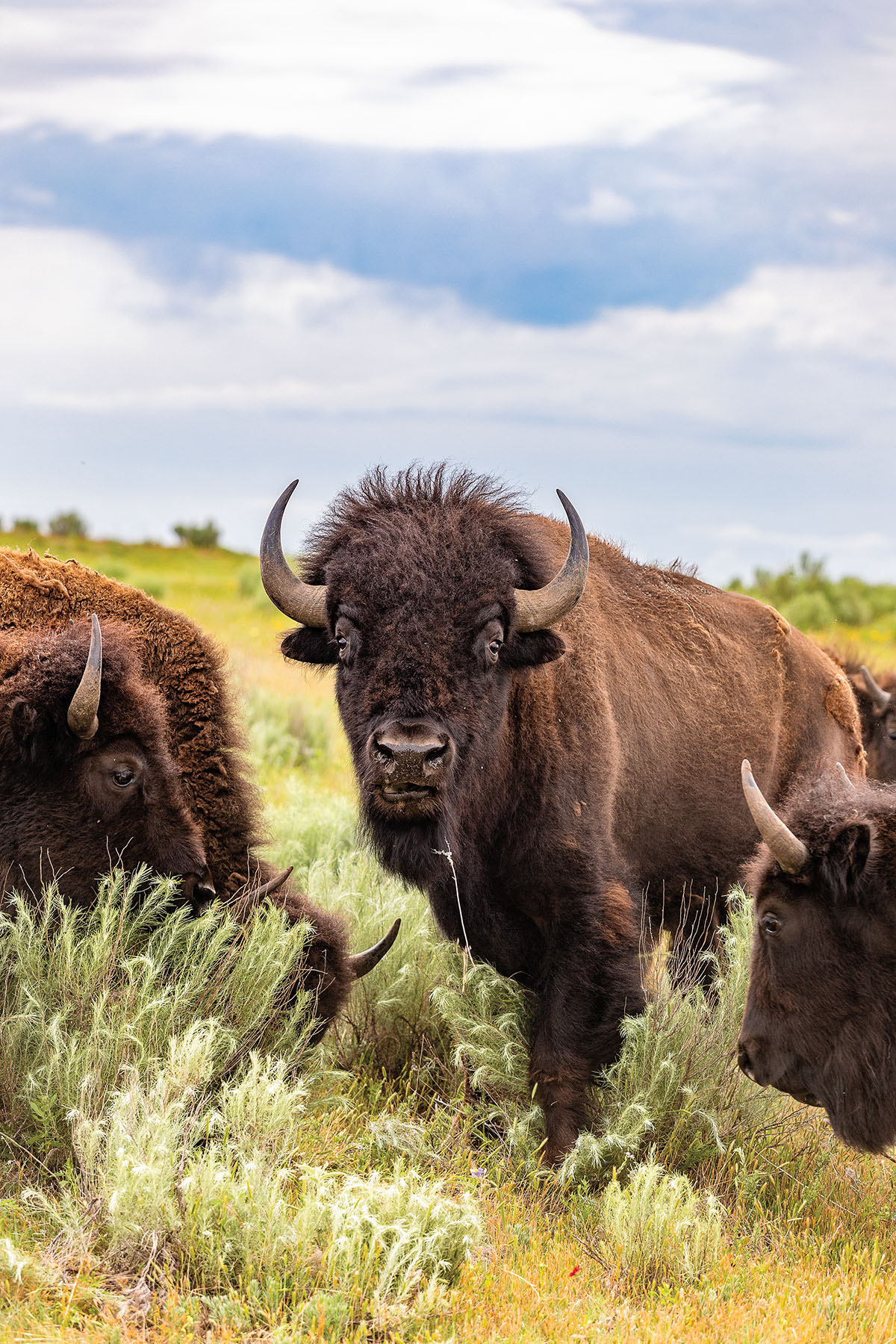
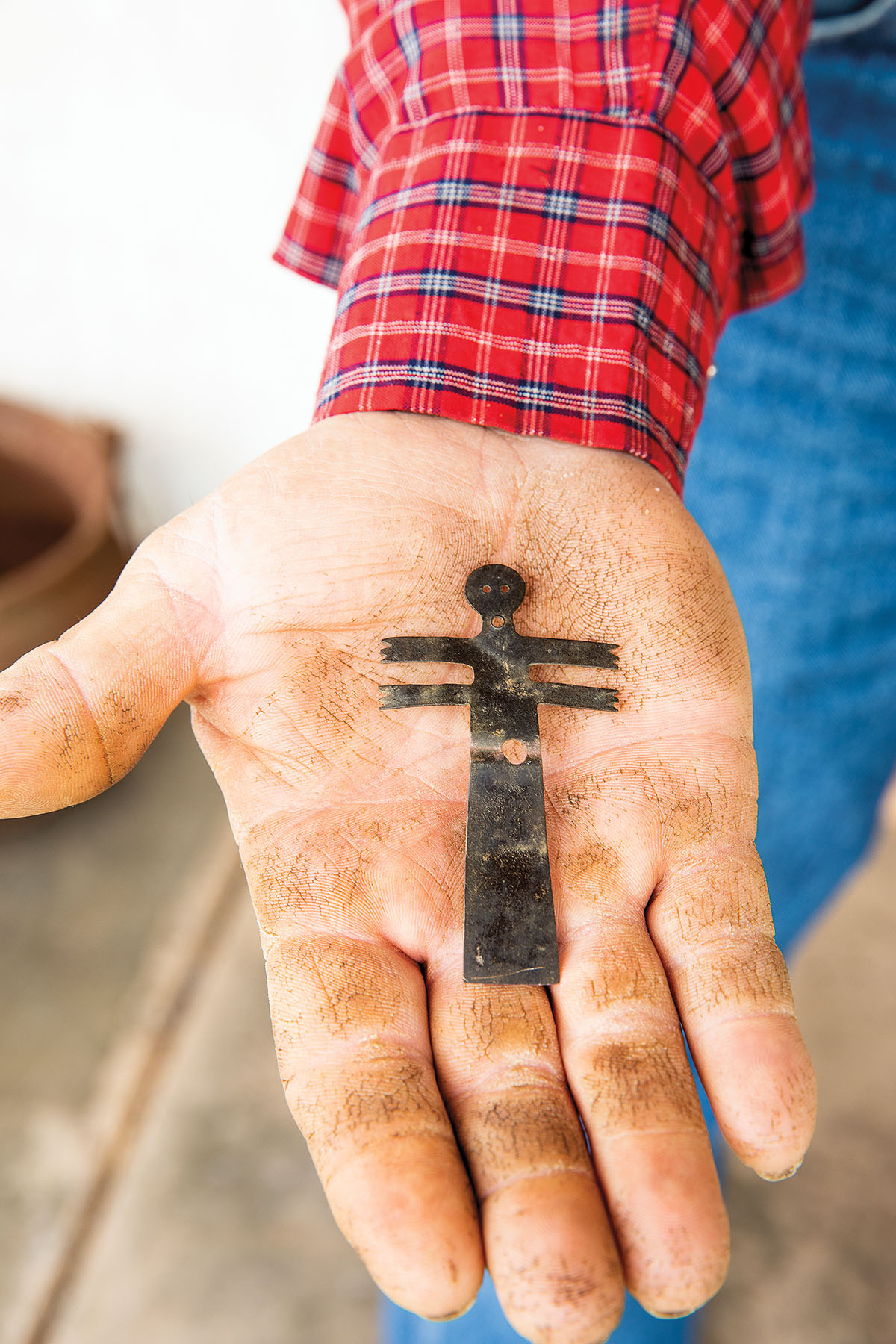
During my last trip
to Lipscomb, in early February, the Bussards drive down a dusty backroad to feed their bison grazing along Sand Creek, a small tributary of Wolf Creek. Lance lights up as the herd rumbles out of a bramble toward the hay bale on the back of his truck. “They’re so beautiful,” he says. The beasts remind him of his family’s deep ties to the wild Texas frontier, and to the Southern Plains Indians who erected tepees and hunted bison along the same stretch of Wolf Creek below the family homestead. Whenever they’re not herding cattle or showing pigs at local livestock shows, Lance and Ben relish hunting for arrowheads along Wolf Creek.
I’m astonished by the Bussards’ extensive collection of arrowheads, spear points, and other native relics kept in glass cases inside their log cabin, and their pestles and mortars baking in the sun on the front porch. For Ben to be able to walk out of his cabin and find such historic treasures in his backyard “would be any boy’s dream come true,” I blurt out. Tanja tells me Ben cherishes his primitive prairieland and his free-roaming way of life as much as Lance.
But for how long?
Sitting on their sprawling front porch, Tanja casually mentions to Ben that someday he’ll probably have his own family and may want to live somewhere else. “Oh Mom,” Ben exclaims. “I’ll never live away from here. Never!”








